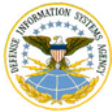DISA to issue an RFP this month
 On August 31, the Defense Information Systems Agency (DISA) posted the following notice about its upcoming Defense Spectrum Organization Electromagnetic Spectrum Applied Engineering Spectrum and E3 Services solicitation. A formal RFP will be issued on or before September 30, according to the agency.
On August 31, the Defense Information Systems Agency (DISA) posted the following notice about its upcoming Defense Spectrum Organization Electromagnetic Spectrum Applied Engineering Spectrum and E3 Services solicitation. A formal RFP will be issued on or before September 30, according to the agency.
The DSO, which is a part of the Defense Information Systems Agency (DISA), is a recognized center of excellence for DoD spectrum matters. One of DSO’s missions is to provide spectrum and Electromagnetic Environmental Effects (E3) engineering and analysis support services on a reimbursable, customer-funded basis to DoD Components, federal agencies, non-federal government organizations, and to foreign entities when authorized by the DoD Chief Information Officer (CIO), the Chairman of the Joint Chiefs of Staff (CJCS), or the Foreign Military Sales (FMS) process through the Defense Security Cooperation Agency.
Engineering support related to spectrum operations are an integral part of the overall information battlespace. In future operational environments it is essential that electromagnetic systems perform as expected to help achieve mission objectives. The challenges faced in meeting our objectives include:
• Rapidly changing technologies associated with spectrum systems
• Competing demands for spectrum access
• Adversaries utilizing advanced technologies
• Coordinating and collaborating with all pertinent stakeholders (e.g., services, intelligence community, commercial, academia)
• Providing timely and accurate information for decision makers at the appropriate level
• Working efficiently across multiple mission areas and organizationsA thorough understanding of the physics and technologies related to spectrum-dependent systems and how tactical operations are affected, is essential in supporting this effort. This would include:
• Spectrum related technologies (e.g., electromagnetic propagation, non-linear effects, antennas, near field conditions, Electromagnetic Pulse, etc.) across the electromagnetic spectrum
• System performance considerations (e.g., digital signal processing, Software Defined Radios, encryption technologies, system vulnerabilities, etc.)
• Software tools (e.g., engineering, scenario) applications and limitations
• Testing and measurement tools and processes and limitations
• The integrated operational, technical, and policy (e.g., regulations generated by the World Radiocommunications Conference) aspects of the EMS Applied Engineering Support taskingTo achieve the objectives of this requirement, it is imperative that the contractor takes an integrated approach, considering the DSO and its customer base and technical, operational, policy, and acquisition factors, and working with close communications with all stakeholders to ensure requirements and expectations are met. This includes:
• Promoting and leveraging a multi-disciplinary, highly-skilled workforce with technical, analytic, and operational expertise
• Encouraging collaboration to strengthen partnerships across diverse domains
• Aligning business processes, management practices, and tools to best serve the broader community
• Applying consistent and repeatable quality management practices (e.g., ISO 9001) to ensure that requested products and services are value-added and delivered within cost and schedule. Management of elements include:
• Planning
• Execution
• Communications
• Monitoring (e.g., periodic reviews, testing)
• Adjustments
• Delivery and acceptance criteriaThis contract will provide technical support to DSO for the following tasks:
a. E3 and Spectrum Engineering – analyzing equipment and systems for potential E3 problems and recommending solutions; performing radio frequency (RF) measurements; assisting the acquisition community by assessing E3; determining and evaluating operational frequency bands; and providing assistance in acquiring host nation approval for equipment operation.
b. Technical Advice – analyzing national and international electromagnetic spectrum issues and advising executive decision-makers on the technical viability of policy and implementation options.
Full information is available here.
Source: FedBizOpps







